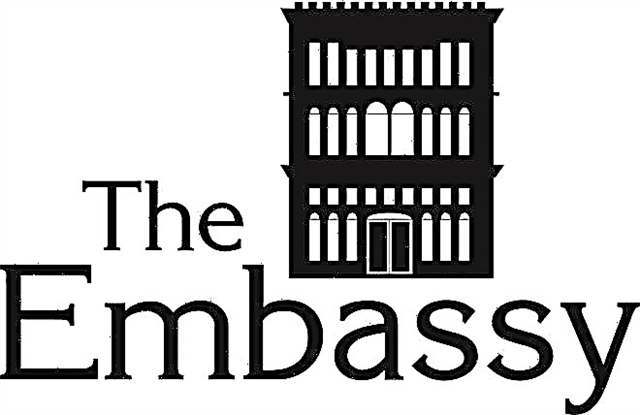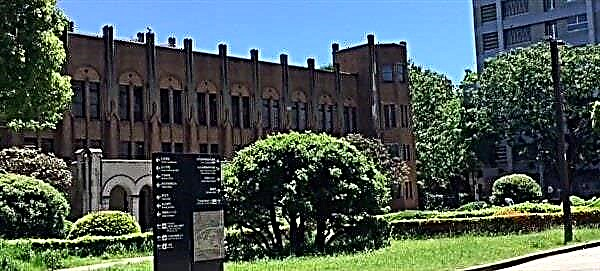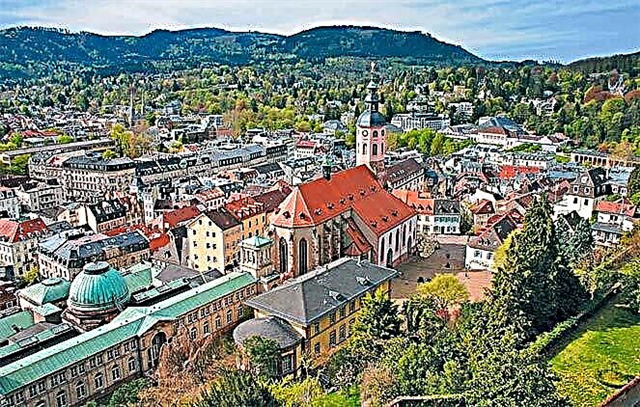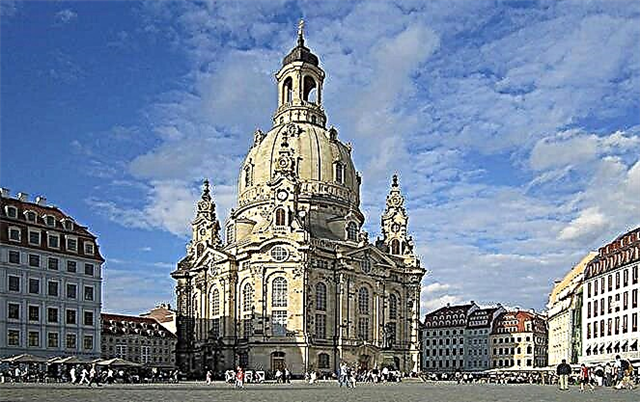The Frauenkirche in Dresden is a monumental Lutheran temple. The building was restored only in 2005, before that the ruins of the church served as a reminder of the bombing of the city in 1945. Today the temple is highly respected by local citizens. There is an observation deck under the dome of the church with a wonderful view of Dresden.

Basic information about the temple
The active Evangelical Lutheran Church of Our Lady of Frauenkirche is located in the historic center of Dresden. The temple stands close to the famous Brühl Terrace, the Palace of Culture and the Academy of Fine Arts. The cathedral was erected in the first half of the 18th century, but during the Second World War, the church was practically destroyed.
The restoration of the temple began in the 90s of the last century, and the cathedral opened its doors only in 2005. The building was literally assembled brick by brick - the surviving fragments that have survived in the city. Today the Church of Our Lady is the most visited attraction in Dresden.
Construction and restoration
The church on this territory was already in the XI century. The small building was expanded over time, it acquired features of the Gothic style, and at the end of the 15th century the first tower appeared. During the Reformation, the temple was placed at the disposal of the Lutheran community in Dresden. By the beginning of the 18th century, the building of the cathedral already looked dilapidated, moreover, the temple turned out to be too small to accommodate all the people who came. For this reason, in 1727, the Church of the Virgin was demolished. From that moment on, a new history of the Frauenkirche began, but in the Baroque style.
The construction plan of Georg Baer was approved for 4 years. The laying of the foundation began on August 26, 1726, the construction came to its completion only in 1743. The project cost 300 thousand thalers, most of which were donated by the citizens of Dresden.
The new church, built by the architect Baer, was a majestic building 95 meters high, topped with a huge dome. The temple was designed for 3,500 seats.
The cathedral harmoniously combined a simple appearance and rich interior decoration. The new Church of the Virgin was called a real building miracle. In 1743, in the region north of the Alps, it was the largest sandstone structure, with the largest stone dome.
Initially, the dome was planned to be made of wood and covered with copper, but it was eventually built from sandstone. The model was taken from the Cathedral of Santa Maria della Salute in Venice.
Baer's Baroque project was criticized by Academician Zacharis Longlun and his student Johann Christoph Kneeffel. At their request, the dome was given an oval shape and more directed upwards. The interior plan was developed by Knöffel. Ultimately, only the altar was not affected by classicism.

In 1743, when the construction was completed, a cross with an A-shaped cross was installed on the dome, which was a symbol of the power of Augustus the Strong. The result is an iconic Protestant Baroque cathedral, notable for its unusual architecture. Never before in the world has there been a dome with such a peculiar shape: tapering downwards, reminiscent of a bell.
Over the next two hundred years, the Frau Kirchen temple was repaired and reconstructed many times. The last reconstruction was carried out in 1942. In 1945, the cathedral was bombed from the air and turned into ruins. Only the monument to Martin Luther and the majestic altar of the Frauenkirche were saved. Molten tin from a completely destroyed and burnt church organ became a kind of protective shell.
As already noted, during the Second World War, the church was completely destroyed, only the tower on the northwest side and the choir survived. The first studies of the remains of the temple for the purpose of restoration were carried out during 1945-1949. During this period, 600 m³ of debris was collected. However, the lack of funds in the post-war years did not allow the authorities to restore the cathedral.
The ruins of the Frauenkirche were not touched by anyone until 1993.
The destroyed temple stood in the very center of Dresden for almost 45 years.
Fundraising for the restoration of the cathedral within the framework of the "Action - Frauenkirche" movement began in 1989. The foundation stone was laid in May 1944, but the real construction began only in 1996. Next to the restored church was a wooden bell tower with the surviving Frauenkirche bell.
During the restoration, the architects had to disassemble the ruins into separate fragments, collect all the fragments and stones. The parts were compared and labeled to determine the location of each. The destroyed cathedral was completely rebuilt more than half a century after the defeat, in time for the 800th anniversary of Dresden. The ceremonial consecration of the Frauenkirche after re-construction took place on October 30, 2005.
Exterior and interior decoration
Today's cathedral consists almost half of the original fragments - they are darker, so they stand out against the background of new stones, which will change color over time and will no longer differ from the old ones. But for the rebuilding of the dome, only new materials were used, because the original stones were too damaged.
As we have already said, the church altar was created in the Baroque style. The restored altar consists of 80% of the original elements, which have been miraculously preserved. The sculptures to decorate it were made by Benjamin Thomé (1682-1751) and Johann Christian Feige (1689-1751). In the center of the composition is depicted Christ praying in the Garden of Gethsemane. On the right side you can see Jerusalem and the sleeping disciples, and from afar the Roman soldiers are already moving. An angel flies over the head of Jesus, holding a cross - a symbol of the impending death of Christ. The composition is viewed from above by the "eye of providence" or God's eye - an eye enclosed in a triangle surrounded by clouds, which is inherent in the Baroque era.

Other Biblical characters are also represented in the altar: on the left, the artist placed the Apostle Paul with a book and sword in his hands, on the right - Aaron with a censer, closer to the center - the Apostle Philip with a cross. Angels fly over them, holding in their hands tied spikelets of wheat and vines - symbols of the sacrament. The organ created by the famous organ master Silberman is organically combined with the altar.
The interior of the cathedral is distinguished by emphasized solemnity. The light decoration of the temple creates the impression that the walls seem to be glowing from the inside. The paint with which the walls were painted was prepared according to old recipes.
The dome was painted by the artist Christoph Wetzel. In order to restore the historical painting, archival documents had to be used. True, the documentation was badly damaged, so it was difficult to be sure that the colors in the photos matched the original. For reliability, the artist and the architect also studied the records of the testimonies of their contemporaries regarding church murals from a similar period.
Observation deck
An observation deck is located under the very dome of the cathedral at a height of 67 meters. All the remarkable buildings of the historical part of Dresden are perfectly visible from it: Brühl's terrace, the legendary Zwinger, the Academy of Fine Arts, the Palace of Culture and the Elbe bend. The site is only open during the summer months. 24 meters can be reached by elevator, the remaining 43 meters will have to be covered on foot.
If the entrance to the temple is free, then you must pay to visit the site. For adults, a ticket costs 8 euros, beneficiaries (children, pensioners, disabled people) must pay 5 euros. A profitable family ticket will cost only 20 euros, and holders of the Dresden Welcome Card, Dresden City Card and others can deduct 2 euros from the total ticket price - their personal discount.

The doors of the church are open from Monday to Friday from 10:00 to 12:00, at noon there is a break in the cathedral, which lasts until 13:00. After lunch, the temple receives visitors until 18:00. On Fridays, everyone can enjoy the mesmerizing organ music; the concert starts at eight in the evening. Weddings and christenings can be ordered on weekends. For this reason, it is better to visit the church with a guided tour on weekdays.
Excursion
Guided tours in German are offered in the Frauenkirche on weekdays and Saturdays. Russian speakers can rent an audio guide for 2.5 euros.
Climbing under the dome of the temple and on the observation deck, accompanied by a guide, telling fascinating facts from the history of the temple, is much more interesting than climbing on your own.
Tours run every 30 minutes throughout the day. From March to October, guides expect visitors from 6:30 to 21:00, and from November to February from 16:30 to 19:00.
The duration of a visit to the Frauenkirche as part of an excursion group is 45 minutes, but taking into account the time spent on the observation deck and the time for descent, you need to count on 1 hour. It costs 10 euros to be accompanied by a guide.
How to get there
The Church of Our Lady is easily accessible. There is a bus that follows route 75. You can also get there by tram number 1, 2, 3, 4, 6, 7 and 12. The nearest stops Altmarkt and Pirnaischer Platz are just a few minutes walk from the cathedral. The exact address of the church is Rampische Strasse, 6.
Cathedrals and churches of Dresden
In addition to the large Protestant Church of the Frauenkirche, Dresden has several beautiful cathedrals with their own history. Dreikönigskirche - Church of the Three Wise Men. It is located between Main and Royal streets. A 7-meter altar was built inside the church, and there is also a 12-meter-high Dresden Dance of Death relief - the most ancient monument of the Renaissance.
The Trinity Cathedral is the largest church in Saxony. Its area is 4800 m². The interior decoration of the temple is a rococo pulpit and an altarpiece painted by Mengas. The largest organ of Silbermann's hands is also located here.

The Church of the Holy Cross is located in the Old Market Square of the city. The building can accommodate 3000 people. At the top of the tower, 92 meters high, there is an observation deck from where the entire city is viewed. Inside, the church is elegant and restrained. Organ concerts are constantly held in the church with the participation of organists from all over the world.
As for the whole of Germany, the Aachen Cathedral, the Ulm Cathedral, the Cathedral in Freiburg, the Church of St. Elizabeth and the Ettal Monastery are no less beautiful and significant in the history of the Federal Republic of Germany.
Finally
The Frauenkirche and other cathedrals in Dresden are must-see attractions in 2021. The Church of Our Lady has stood in ruins for 45 years in the very center of Dresden. The building was completely restored only in 2005.
The interior of the temple is a majestic altar, which is connected to the organ. The observation deck at a height of 67 meters overlooks the historic part of the city.
It is better to see the Frauenkirche on weekdays. There is a break at the temple from 12:00 to 13:00. The church opens its doors at 10:00, the temple closes at 18:00.
You can climb under the dome of the cathedral accompanied by a guide with an interesting story about the amazing facts of reconstruction and the history of the cathedral. The duration of such an excursion is 45 minutes.
You can get to the Frauenkirche by tram or bus.











